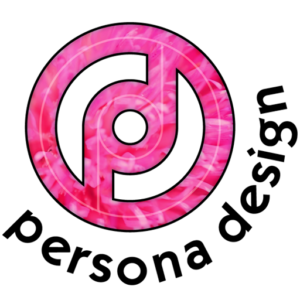YouTube : The 2nd Biggest Search Source After Google, Is Your Brand On?
In announcing its daily traffic flow back in 2010 the video channel YouTube revealed they were the second biggest online search source after Google. That put it higher than Firefox, Bing and even Yahoo. The YouTube report said it received 2 billion views a day. That’s a statistic that put YouTube in front of all the major US TV channels combined.
Three years later nothing has changed audience-wise, except the site has increased in popularity. There are now four billion visitors a day and 60 hours of video uploaded on to the site every minute.
Meanwhile Google rates it even higher in terms of search engine optimization (SEO). YouTube videos show up separately so your page gets listed for the text and the video separately, effectively like two for one! Another interesting statistic is that eCommerce stores which show their products via video have much better conversion rates (says Google owned YouTube) then those that don’t.
Brands Can Have Their Own Online Channel on YouTube
Now the online video search source (bought early on by Google) has come up with an even better opportunity for brands, with the resources to invest in video content, with their own branded video channel.
Called One Channel its part of a redesign for YouTube which involves allowing content developers to start charging subscribers for viewers. To date there are 50 paid channels on YouTube including National Geographic Kids (US) and Samsung UK. Switching to One Channel means more tools to add and curate content, better graphics/art work and the ability to produce a trailer which can be targeted at non-subscribers – all of which greatly enhances to your brand’s marketing activities.
All this of course requires some upgraded skills, not to mention resources and agencies are already offering comprehensive packages to big brands.
The Benefits of a Brand Channel
Regularly uploading content and engaging with customers makes it easier for a company to build brand loyalty through cultivating an ongoing relationship – which is exactly what YouTube is hoping for.
Earlier this year YouTube made a huge leap towards its future strategy model. No longer is it simply a site where people upload videos. Instead it’s now a true social media site in terms of providing a platform where brands can engage with consumers in a dynamic and entertaining fashion.
Video Is More Effective Than The Written Word
Even if your brand isn’t at the One Channel stage yet, videos are still more likely to get your message across than a blog post or press release in isolation. That’s because they require less effort and time to watch, tend to be more entertaining and attractive to look at and give a stronger, more personalized sense of what the brand is all about. It’s a platform that really helps ‘bring your brand to life’.

Image via Business Insider
Online US eCommerce store Zappos has a YouTube video option for 50,000 products on its site with ‘real’ people talking about and reviewing their shoes. This ‘humanizes’ the brand and provides a sense of trust for consumers when they see that the person they’re watching is ‘just like them.’
Video Can Help Educate Consumers
‘How To’ videos have always rated highly on YouTube and this is where many smaller brands selling unique products – or those involved with DIY and crafts – can really excel.
US firm Homedepot show how to customize a pathway using the QuikRete WalkMaker they sell. Potential consumers who were perhaps ambivalent about buying the product because they weren’t sure if it was for them can now see how easy is it to use.
Video Can Enhance Customer Engagement
Tip-ex demonstrated brilliantly how a YouTube video can engage consumers. Its bear/hunter video received one million views within the space of just 36 hours and 100,000 shares on Facebook.
After 100 days the video had picked up a total of 35.5 million views in 217 countries. Brand exposure was estimated to be around five minutes per person. European sales went up 30 per cent.
The reason it was such a hit was because it asked viewers to come up with an ending to the script which involved a hunter who didn’t want to shoot a bear. The company went on to film what they regarded as the best endings.
A clever aspect of this campaign was the number of viewers who returned to see the different endings played out. Meanwhile, by giving consumers the opportunity to create their own ending, it made them feel as if they ‘owned’ the video and by association, the brand.
Other Reasons Your Brand Should Be Using YouTube
- It doesn’t cost much money to produce video content now, thanks to improvements in editing software and camera equipment. In other words, a video production company with an editing suite isn’t necessary unless you are producing high value video content. Video ‘blogs’ or ‘vlogs’ can be produced and uploaded using your smartphone.
- You Tube is available on Smartphones and iPhones – just about anywhere that the internet can be accessed. Videos are easy to embed and share too.
- Just like PPC adverts on search engines or advertising on Facebook, YouTube has a means of advertising via keywords. Advertising on YouTube is just as effective as the aforementioned but with one big difference – it’s less expensive.
Engaging with customers via a two-way process is one step away from encouraging them to become brand ambassadors through building brand loyalty. Video is such a mainstream activity today that companies which aren’t on YouTube can seem rather behind the times – particularly with a younger audience.
One Channel for brands makes it easier to bring together all forms of social media, while Google is putting particular emphasis on video when it comes to SEO.
Providing your brand’s story in an entertaining fashion and quick-to-digest format is more likely to attract visitors – and therefore customers – to your products and services.
• How are you using, or planning to use, online video to promote and grow your brand and connect with your customers more effectively?
• What type of video content could your brand upload onto YouTube – educational, informative, comedy?
• Have you investigated how easy it is to film your own videos as part of your brand strategy?






